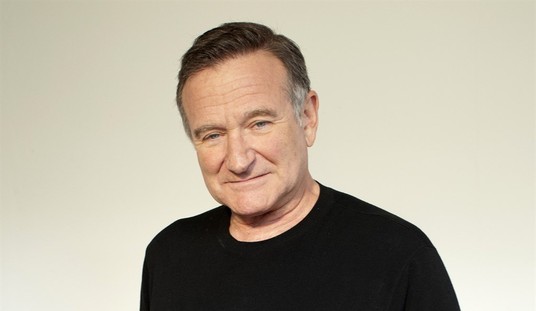As the “public option” sinks slowly beneath the waves of public opposition, the “individual mandate” — a federal requirement that every American adult purchase health insurance, or pay a heavy “excise tax” (in the language of the Senate Finance Committee bill) for failing to do so — has become the linchpin of President Obama’s latest health care “plan.” Although this mandate has been heavily criticized on economic, political, and even moral grounds (in 1994 the Congressional Budget Office found it “an unprecedented form of federal action,” comparable only to the military draft, when proposed as a part of HillaryCare), the full implications of its underlying rationale have not been sufficiently appreciated — or feared.
The justification for requiring every American to buy health insurance approved and certified (and perhaps sold) by the federal government is that the uninsured — often referred to as “freeloaders” by defenders of the president’s “plan” — impose unfair costs on everyone else. As Shikha Dalmia wrote recently in Forbes, “Obama’s whole argument for the mandate is based on the idea that uninsured folks impose an unacceptable financial burden on the rest of us when they land in emergency rooms and get care they can’t pay for.”
President Obama has leaned heavily on this justification in virtually (maybe literally) all of his recent health care pontifications. In his speech to the joint session of Congress a few weeks ago, for example, he claimed that “those of us with health insurance are also paying a hidden and growing tax for those without it — about $1,000 per year that pays for somebody else’s emergency room and charitable care.”
This freeloader argument has been a constant refrain. Thus, on June 11 the president said in Green Bay, Wisconsin, that
the average family pays a thousand dollars in extra premiums to pay for people going to the emergency room who don’t have health insurance. So you’re already subsidizing other folks; it’s just you’re subsidizing the most expensive care. You’d be better off subsidizing to make sure they were getting regular checkups. We’re already paying for it. It’s just it’s hidden in your premiums.
A few days later, in remarks to the American Medical Association in Chicago, he said the same thing:
Each time an uninsured American steps foot into an emergency room with no way to reimburse the hospital for care, the cost is handed over to every American family as a bill of about $1,000 that’s reflected in higher taxes, higher premiums, and higher health care costs. It’s a hidden tax, a hidden bill that will be cut as we insure all Americans.
Indeed, Obama’s proposed health care reform may qualify as the only example in history where spending an additional trillion dollars or so is portrayed with a straight face as a tax cut.
As I’ve mentioned, this freeloader argument has been severely criticized on various grounds, including that it is factually challenged. Shikha Dalmia, quoted above, notes that “uncompensated care costs only about $40 billion annually — or about 2% of the country’s $2.2 trillion health care spending. That’s less than what department stores lose to shoplifting every year.” Similarly, a study by the Urban Institute for the Kaiser Family Foundation found the president’s claims “unconvincing.” Quoting that same study, Jacob Sullom notes that “the true annual cost per family is more like $200, with uncompensated care accounting for ‘less than 1 percent of private health insurance costs.’” There are many other factual criticisms, such as that people without health insurance impose no costs on others if they pay for their own medical care.
The individual mandate has also been challenged — and if it passes, will certainly be challenged in court — on legal grounds. Typical is the argument of David Rifkin and Lee Casey in the Wall Street Journal that such a mandate “would expand the federal government’s authority over individual Americans to an unprecedented degree. It is also profoundly unconstitutional.” Other scholars, even those opposed to the mandate, do not agree. Jonathan Adler, for example, writing on the Volokh Conspiracy, says that he “do[es] not find [Rivkin’s and Casey’s] argument particularly convincing.” Randy Barnett, also on Volokh, is more sympathetic, as are several other law professors who took part in a debate sponsored by the Federalist Society.
I will leave it to others to settle the factual questions raised by the freeloader claim, and to the law professors and, if the individual mandate is included in legislation, to the courts to resolve the legal and constitutional claims. Whatever its factual basis or legal justification, however, the claim that the federal government can require every American to buy an expensive government certified product in order to reduce the burden on others is extraordinary in its little-appreciated implications. And if the argument for the mandate is successful and is ultimately upheld in court, the slope on which we all find ourselves may not be merely slippery; in fact, it may not be a slope at all but a virtually vertical smooth wall.
Some of the implications of upholding a federally imposed individual mandate have been noticed. “If the government can do that,” an article on Fox News noted, “why couldn’t it force people to stop smoking or lose weight?”
Why indeed, but the fact is that if the federal government “can do that,” if it can force a healthy young person to buy expensive health insurance (with some subsidy if necessary) for years in order to protect others from some cost that might be incurred at some point in the future if he should need care that he then can’t afford, if the courts uphold the argument that an individual decision not to engage in a certain form of commerce has a substantial effect on interstate commerce, it can do a lot more than that.
Could it not, for example, require all members of what Title 10 of the U.S. Code defines as the “militia of the United States” to purchase and become proficient in the use of either a handgun or rifle (or both), providing both training classes and subsidies to those who cannot afford a weapon? For those of you who may not realize that you are members of this militia, here’s what Title 10 says, in Section 311:
(a) The militia of the United States consists of all able-bodied males at least 17 years of age and, except as provided in section 313 of title 32, under 45 years of age who are, or who have made a declaration of intention to become, citizens of the United States and of female citizens of the United States who are members of the National Guard.
(b) The classes of the militia are —
(1) the organized militia, which consists of the National Guard and the Naval Militia; and
(2) the unorganized militia, which consists of the members of the militia who are not members of the National Guard or the Naval Militia.
Indeed, even the leftist Democratic Underground has cited California law recognizing the unorganized militia and asked, “Why doesn’t Schwarzenegger call out the unorganized militia to help fight the fires in California?”
Even a mandate to own a weapon is not without precedent, and I refer not only to Switzerland, “where almost every adult male is legally required to possess a gun.” (Aren’t we still supposed to model ourselves on our European betters?) In 1982 Kennesaw, Georgia, required all heads of household to own a gun and ammunition, with an exception for felons, conscientious objectors, and those who couldn’t afford one.
Whether or not such a policy is wise is debatable, but there is extensive evidence that more guns means less crime and hence reduces the cost those prevented crimes would have imposed on their victims and society at large. In Kennesaw, for example, the crime rate plummeted after passage of the law, despite soaring population growth:
[I]n figures the city provided to the FBI Uniform Crime Report, Kennesaw had 54 burglaries in 1981 — the year before the gun ordinance — with a population of 5,242. In 1999, with a population of 19,000, only 36 burglaries were reported.
The rate of violent crime is approximately four times lower than the state and national rates,
The most respected researcher on the effects of gun ownership, Prof. Gary Kleck of Florida State, has concluded that a gun is used to prevent a crime (not necessarily firing the gun) every 13 seconds. Kleck also points out that gun ownership is a cost-saving measure, especially for poor people:
Although gun ownership costs more money than simple measures such as locking doors, having neighbors watch one’s house, or avoidance behaviors such as not going out at night, it costs less than buying and maintaining a dog, paying a security guard, buying a burglar alarm system, or relocating one’s residence to an area with less crime. Consequently, it is a self-protection measure available to many low-income people who cannot afford more expensive alternatives.
Now of course the argument that more guns means less crime is controversial, but it is no more my point to argue here that is true than it is to argue that the assertion that freeloaders cost every family in America $1000 a year is false. My point is that if a president and a majority, even a bare majority, of Congress believe it (a belief that no court could find frivolous, irrational, or without good evidence), then none of those now arguing that the “freeloading” of the uninsured justifies a radical and unprecedented federal mandate on every individual to buy insurance can be heard to make a principled, consistent argument against an individual mandate to be armed.
President Obama, look in the mirror and meet Dr. Frankenstein, teetering at the top of a long, slippery, vertical incline.









Join the conversation as a VIP Member